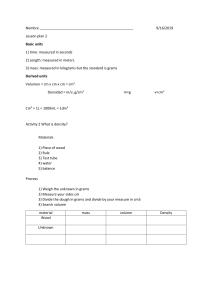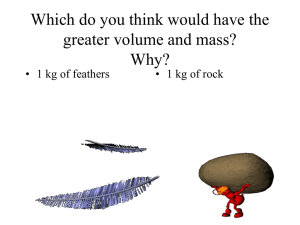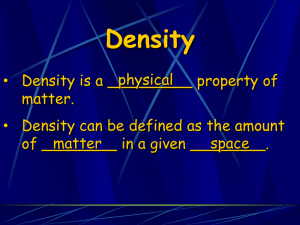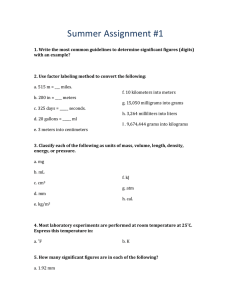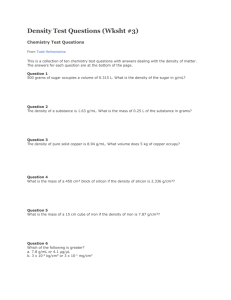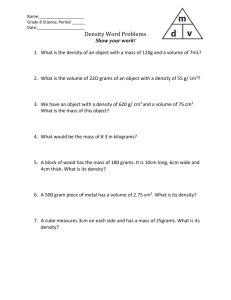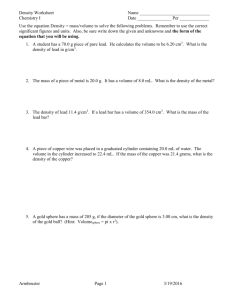Density Lab Report: Experiment & Calculations
advertisement
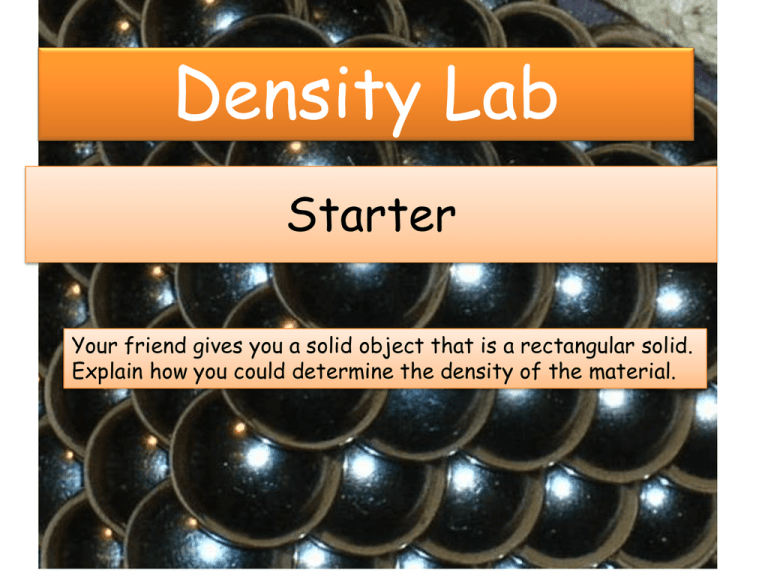
Density Lab Starter Your friend gives you a solid object that is a rectangular solid. Explain how you could determine the density of the material. Practice Design an experiment to determine the density of three different materials: A wooden block, a cylindrical solid, and water. You have a triple beam balance, a meter stick, and a graduated cylinder that you may use. Questions: 1. Which of your samples would float in water, and which would sink? Explain how you know this. 2. Calculate the density of the Earth. Show ALL your work. ( Volume of a sphere = 4/3 π r3 Earth’s Diameter: = 12,718,000 m Mass: = 6.00 x 1024 kg ) Wood Block Wood Block Trial Length (cm) Volume Experimental Accepted Percent 3 3 (cm ) Density (g/cm ) Density Error (g/cm3) Width Thicknes Mass (cm) s (cm) (grams) 1 2 3 Average Volume = average length x average width X average Thickness Experimental Density = average mass / volume .500 Water 3 Experimental Density (g/cm ) Accepted Density (g/cm3) Water 1.000 Trial Volume (ml) Mass (grams) 1 2 3 Averages Experimental Density = average mass / average volume Percent Error Cylindrical Solid Trial Length (cm) Diameter (cm) Mass (grams) Volume (cm3) Accepted Experimental Density Density 3 (g/cm ) (g/cm3) 1 2 3 Averages Volume = (average diameter/2)2 x (average Length) Experimental Density = average mass / volume Percent Error Lab Report Checklist 1. Starter 2. Data tables 3. 8 Calculations ( 2 volumes, 3 densities, 3% errors) 4. Questions (2) 5. Summary ( with objective, procedure, results, and reasons for error.)

